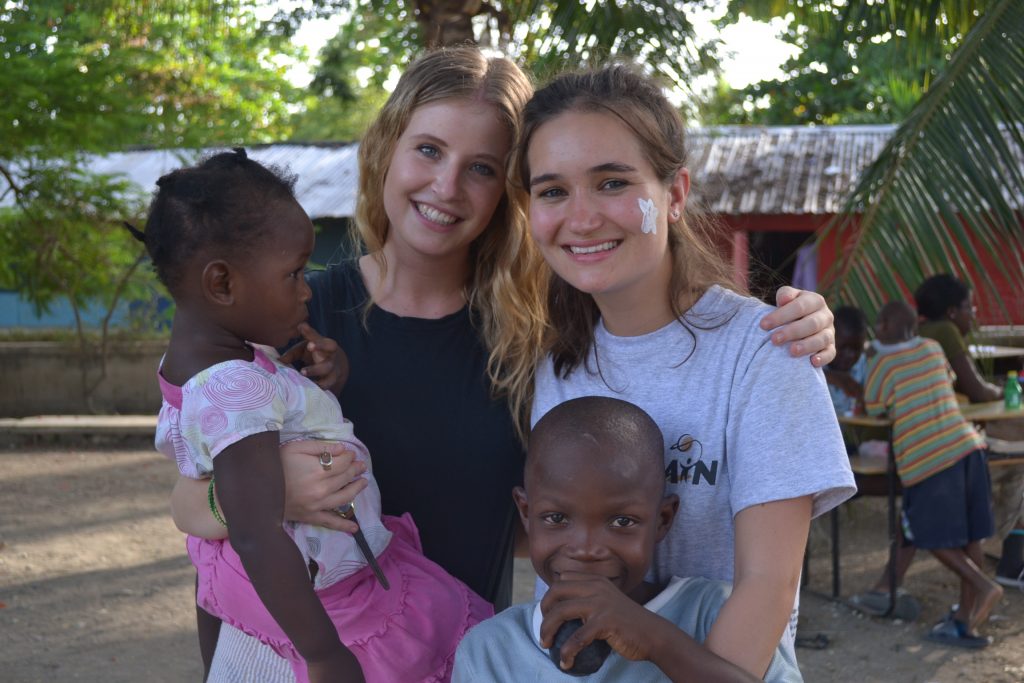Even from the plane window, it was clear where the Dominican Republic ended and Haiti began. Houses were replaced with ‘tents’, haphazardly constructed with corrugated iron and any material that could be got hold of. On the ground the smell was pungent. People stood or sat in the dust and heat, surrounded by belongings they were trying to sell. Food vendors batted insistent flies off their meat. Women at market stalls lay on the ground half –asleep, their flesh hanging loosely. Children, skinny animals and motorcyclists careened between the stalls. Yet somehow, there was a happy, chaotic atmosphere to the place.
This is what springs to mind most when I think of Haiti: a grey, dusty and hot country populated by brightly-coloured people. On Sunday at the orphanage in Ca-Ira, where we lived and worked, everyone came out in their brightest clothing: the boys in spectacularly polished shoes, the girls with ribbons flowing from their tightly-knitted braids. Everyone gathered in the make-shift church singing praises to God. There was so much energy and life. Despite their suffering, they joyfully thanked God for their existence.
We worked with Haitian builders to put the finishing touches on the new boys’ dormitories. This included cleaning everything, painting the walls white, gardening the courtyard, making mosquito screens for the windows and generally clearing away rubble to turn a building site into a home. The builders made do with what they had. We used a broken protractor from the school room to scrape flecks of concrete from old windows.
We also visited a family who lived nearby. Their hut was just large enough to fit a double bed, yet it housed five people: a twenty-five year old mother with four young children, all from different fathers. She asked us to pray that she would find some stability. With our western clothes and sturdy water bottles, this was a painful encounter.
Yet the orphanage had enough to feed and clothe the children and the necessary simplicity did not seem to take away from their enjoyment of life. The children were creative, making toy cars from old juice bottles and kites from plastic bags. These kites flew high above the orphanage, the children chasing each other across the yard.
During my stay I developed a friendship with a woman who had grown up at the orphanage. Israelite had a beautiful smile and infectious laugh. One of nine children, her parents could not afford to take care of them, so at age six, Israelite and her sister had come to the orphanage. In the earthquake, Israelite’s sister was amongst the children who died. And without sanitary facilities or money, those who remained had been forced to leave the orphanage and move to Port-au-Prince.
After GAiN agreed to rebuild the Ca-Ira orphanage, Israelite moved back to the original site. The community there had always been her family. She told me, “We’re all children of God but we don’t all live in the same way. I would like to live how God intended me to. I would like to be someone who helps others.”
This Student Life team was one of many groups from around the world who have supported locals rebuilding their lives in Haiti. GAiN will continue to support this children’s centre, providing schooling and job training for children as they get older.
If you would like to give to support this project please visit our giving page and click on Ça-Ira Children’s Village Haiti to make a donation. If you would like to know more about how you can be involved through sponsorship or even going on a similar trip please email sarahpatel@agape.org.uk.

